3 days in Salar de Uyuni: The Ultimate Guide
Planning to spend 3 days in Salar de Uyuni? Get my best tips here.
At 12,000 square kilometers, Salar de Uyuni is the largest salt flat in the world.
Driving across it when the bright blue skies contrast with the blinding-white salt crust is one of the weirdest and most fantastic experiences I’ve ever had.
I have to say – the Uyuni desert exceeded my expectations both in regards to scenery and the tour company itself.
I’ve never seen anything like this in my life, and I still get goosebumps every time I look at the pictures from this place.
In this post, I’ll share all the info you need for planning a 3-day trip to Bolivia‘s salt flats, including a packing list, which tour company to go with, and inspiration for funny salt flats pictures.
Let’s dig in.
This post contains referral links for products I love. Adventurous Miriam earns a small commission at no extra cost to you if you purchase through my links. I appreciate your support ♡ Learn more
3 days in Salar de Uyuni
Join a 1, 2, or 3-day Uyuni tour
Salar de Uyuni, Bolivia offers a variety of tours ranging from one to three days. I HIGHLY recommend taking a 3-day tour because there’s much more to Uyuni than the salt flats.
1-day tour: In one day, you will see the salt flats and be able to snap those famous funny pictures.
2-day tour: In two days, you can visit the salt flats, see flamingos, and nearby Lagunas.
3-day tour: I did the 3-day tour, which took us across 12,000 square kilometers packed with volcanos, red, green, and white lakes, strange rock formations, and a landscape similar to Mars. This is what I recommend!
Book the tour in advance
We booked our tour 1,5 months in advance, but that’s just because I’m an obsessive planner.
I know a lot of travelers book the tour on the day they arrive, but chances are that your numbero uno tour operator doesn’t have any space left.
If you book the tour 2-4 weeks in advance, you should be fine.
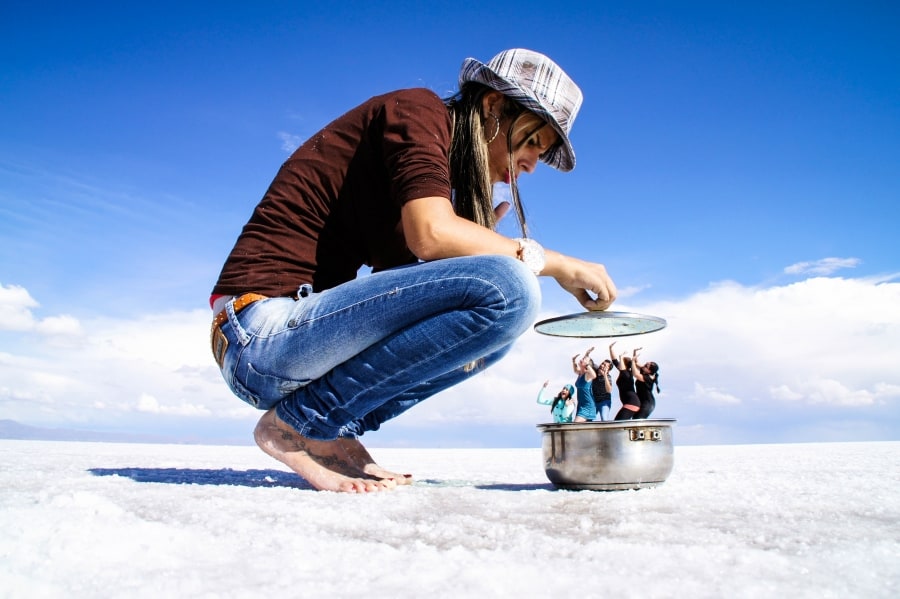
Make sure to choose the right Uyuni tour company
During my research of Uyuni tour companies, I read many horrifying stories about drunk drivers and people going hungry for days, so I was kinda on edge to find a decent company.
As I discovered, some of the most popular companies are Cordillera Tours, Red Planet, and Quechua Connections.
We chose Quechua Connections, partly because of the good reviews on Tripadvisor and also because it’s a family-run company.
I had a good feeling about them, and my intuition was right. I have nothing but praise to give this tour operator. They cost the same as everyone else, and José (the owner) makes the tour so much more fun.
He speaks excellent English, knows all the good places, has great ideas for photos, and he’s a good cook! He even took us to his favorite place to see llamas, which was not on the itinerary.
Book with Quechua Connections:
You can contact José at this email address: [email protected]

Price of the 3-day Uyuni Salt Flats tour
- The three-day tour: 995 bolivianos
- Fee to the National Park: 150 bolivianos
- Coins for the toilets and shower (it usually costs 1-2 bolivianos)
In total: 1,155 Bolivianos ($168)
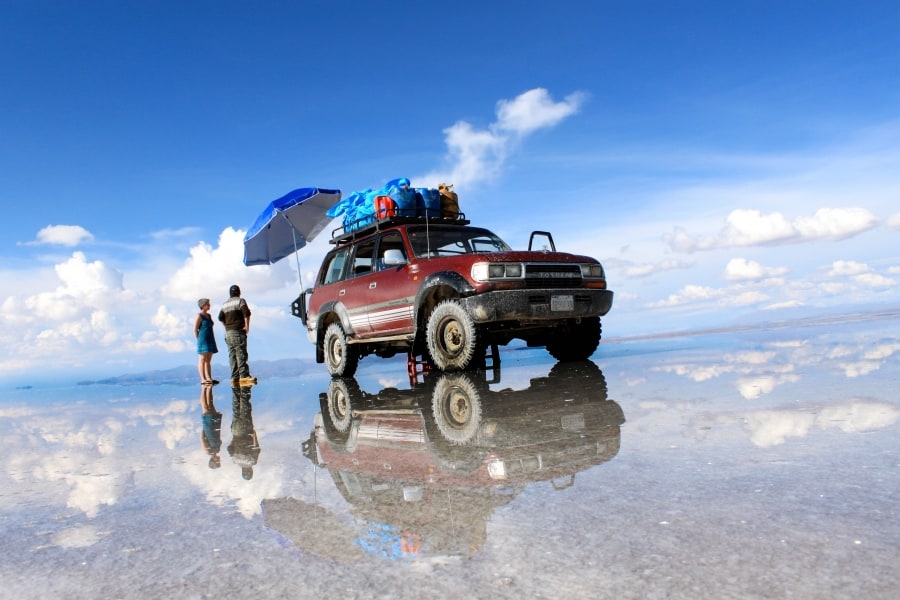
3 days in Salar de Uyuni
Day 1: Cactus Valley, Uyuni Salt Flats
Cactus Valley
We got to Uyuni at 7.15 in the morning after a one-hour flight from La Paz.
As we arrived at the Quechua Connections office, I was instantly greeted by José; the owner of this family-run business, and his lovely family. He had been doing these tours for 14 years.
The Salar de Uyuni tour started at 11, which gave us a few hours to have breakfast and buy supplies.
After picking up the rest of the group – three Bolivian cousins and an American – we headed for the Cactus Valley.
This place was only a few kilometers from the town and it consisted of a large plantation of cactus plants bearing delicious fruits.
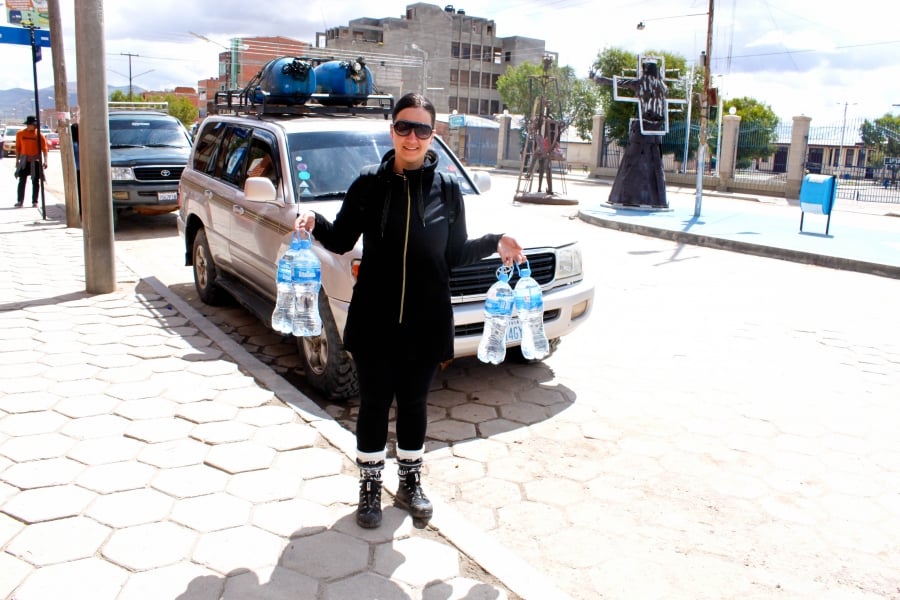


The Train Graveyard
Next on the program was the train graveyard; a semi-large collection of trains and carriages just outside of Uyuni town.
Mining companies used these trains to transport minerals to the shores of the Pacific Ocean up until the 1940s.
When the industry collapsed, it left behind the trains that can be seen today.
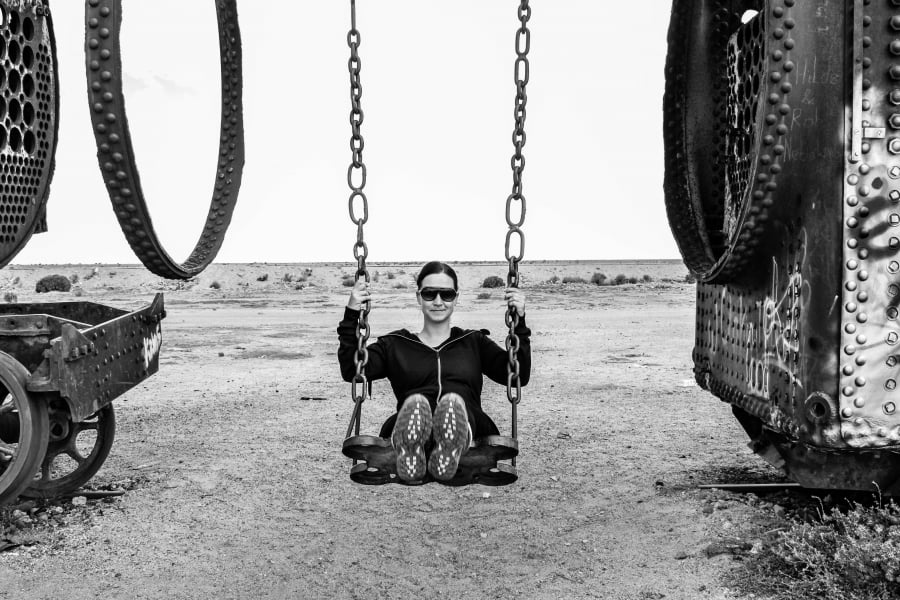
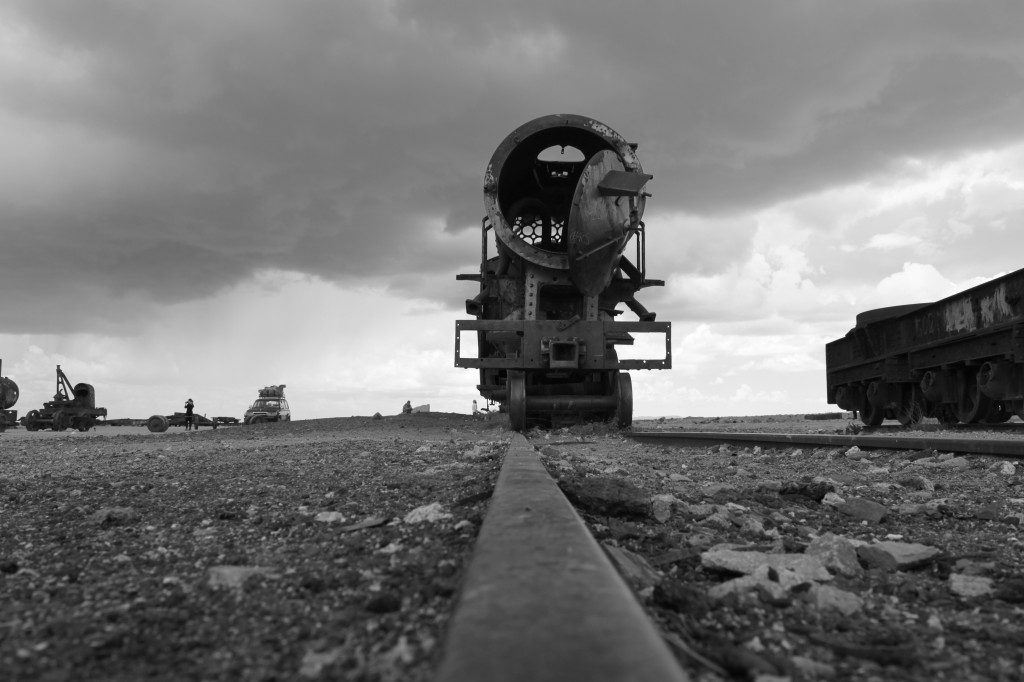
Salar de Uyuni (the highlight!)
We then drove 30 minutes to the salt flats – Salar de Uyuni.
This magnificent place, standing at 3,600 meters above sea level, was formed thousands of years ago when a large prehistoric lake dried out and left behind this major salt desert.
In the middle of the flats, there is an island of giant cacti that measure up to 12 meters high and are over a thousand years old.
Apart from being an interesting place, this is also popular for snapping funny perspective pictures.
Like doing yoga on a box of Toblerone, having your friend stand on your hand, or cooking the team for dinner.
After spending a few hours snapping salt pictures and having lunch, we drove further out in the flats. The further we got, the more water was on the surface and this made for a perfect picture setting.

How to take the best Uyuni funny photos
Taking funny pictures was the thing we’d been looking forward to that day.
While José had some pretty creative ideas, we had done our research from home and brought some props.
Miriam’s photo tips:
- Bring some accessories, like M&M’s, Toblerone, toy animals, a fork, or something similar to take photos.
- Make sure the composition is perfect.
- Have one object close to the camera, and the other one further away (like in the photo below).
- You get the best photos lying down on the ground. Just check out Jose below. That’s dedication, guys.

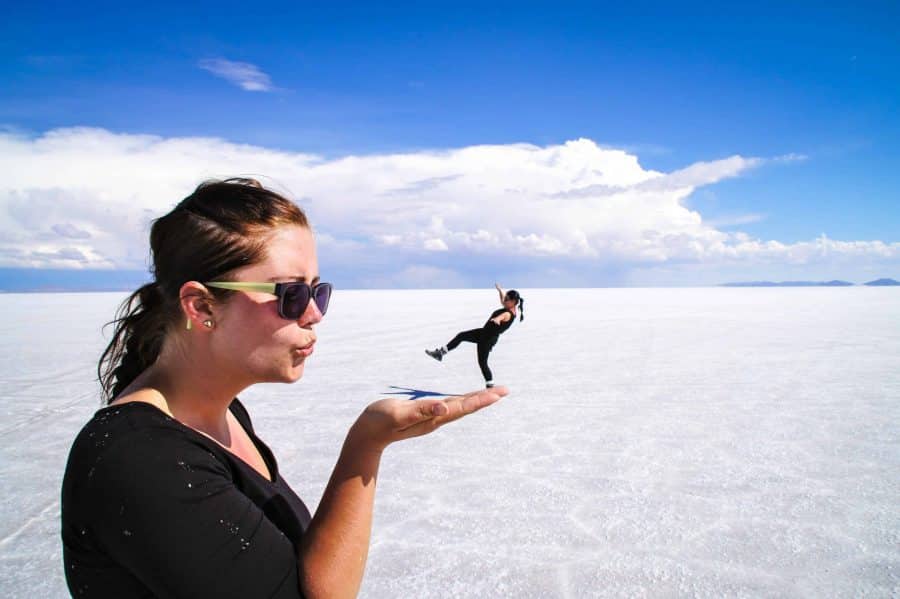
Uyuni in the rainy season
Bolivia’s Salar de Uyuni is pretty spectacular no matter when you visit.
However – if you want those hypnotic mirror views that merit a reward, you need to go in the rainy season (December – March).
I went in January and think this is the best time to visit the Bolivia salt flats. The mirror effect is out of this world and it looks like the largest mirror on earth – so beautiful.
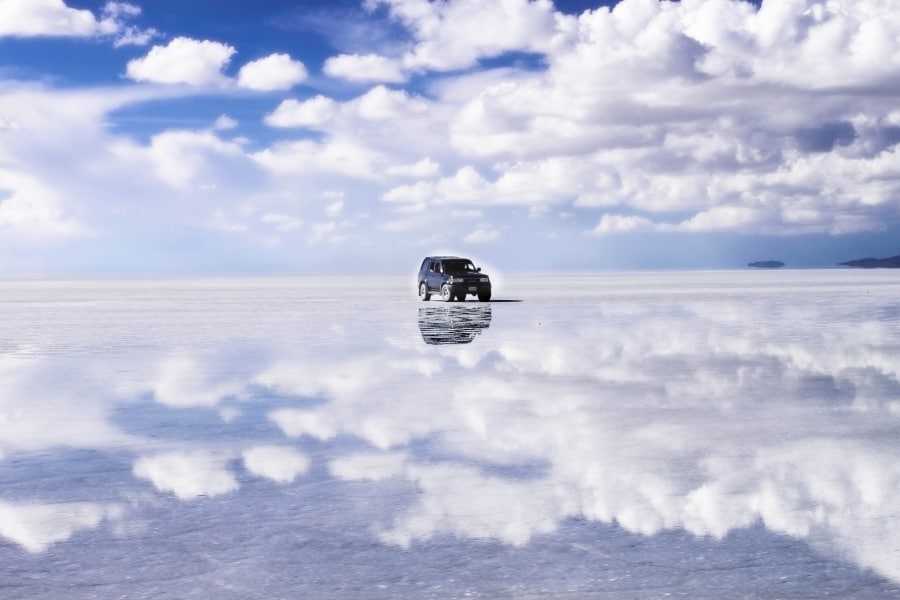


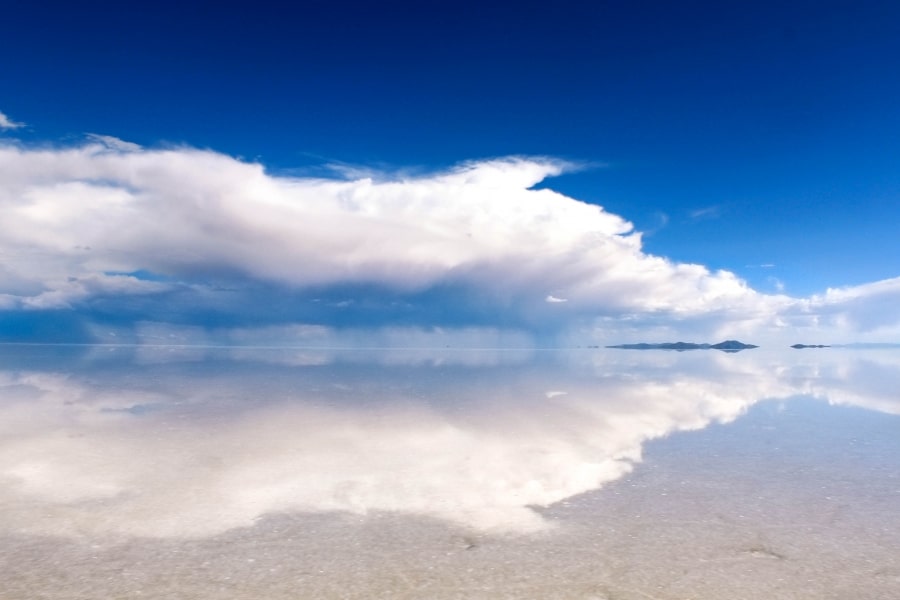


Salar de Uyuni night
We spent six hours in Salar de Uyuni and also watched the sunset, which is the most beautiful time of the day.
I spoke to someone in La Paz when we got back, and he told me that his tour company had only set off one hour for the salt flats.
Another reason why it’s important to choose the right tour operator.
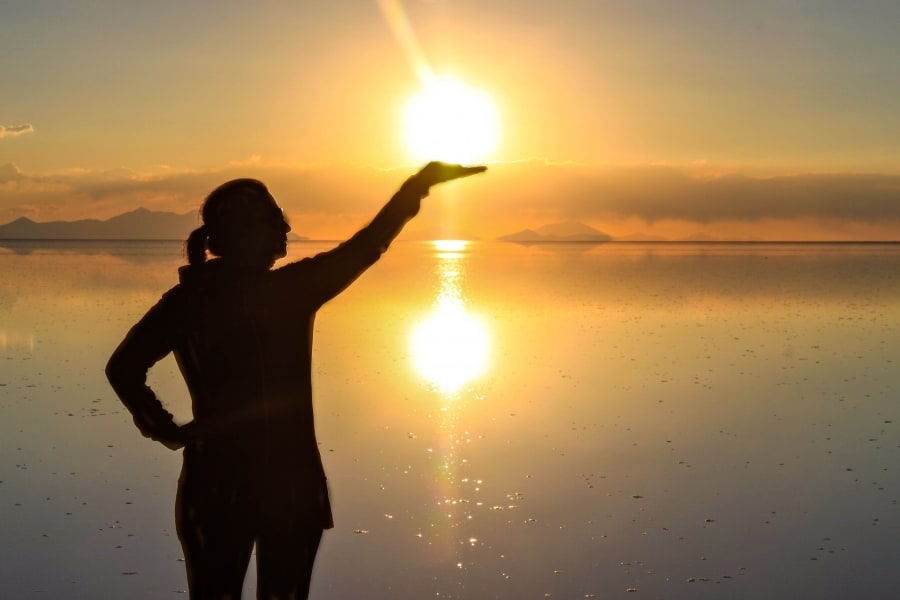


Day 2: Stone desert, Laguna Colorada Blanca, Geyser and Hot springs
After visiting the Salar yesterday, I had a hard time believing that we would see anything even remotely as beautiful, but I was in for a surprise.
The following two days we would drive even further into the desert to see active volcanos, colorful lagoons, unearthly nature, and warm bubbling saline springs.
A 970 km drive reaching a height of 5,000m across south-east Bolivia to the Chilean border was ahead of us.
The stone desert
We got up at 7 am, had a short breakfast, and off we went.
The first stop for the day was the stone desert; a large area of rock formations shaped by volcanic lava, wind, and weather over the years.
Driving through the scenery, it looked as though we were on another planet. The surrounding volcanos, blindingly red sand desert, and the many shifting colors made it look extraordinarily beautiful.
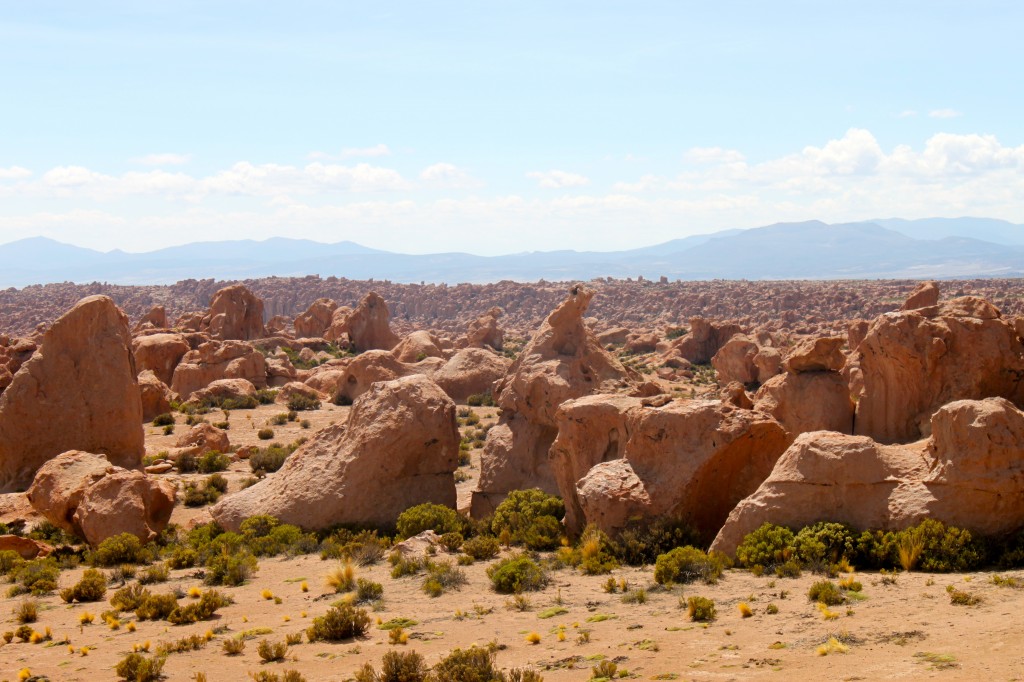

Laguna Blanca
At Laguna Blanca (white lagoon) further south, flamingos prowled the whitish water and ash-colored mud. “There are three sorts of flamingos in Uyuni: Chilean, James, and Andino,” José had told us.
I have never seen landscapes that made me feel more humble to nature.
Thousand kilometers of raw, untouched nature, weird formations that resembled faces and giant cauliflower and space rocks with nature as the creator – all set against dazzling blue skies.
It was nothing short of magnificent.
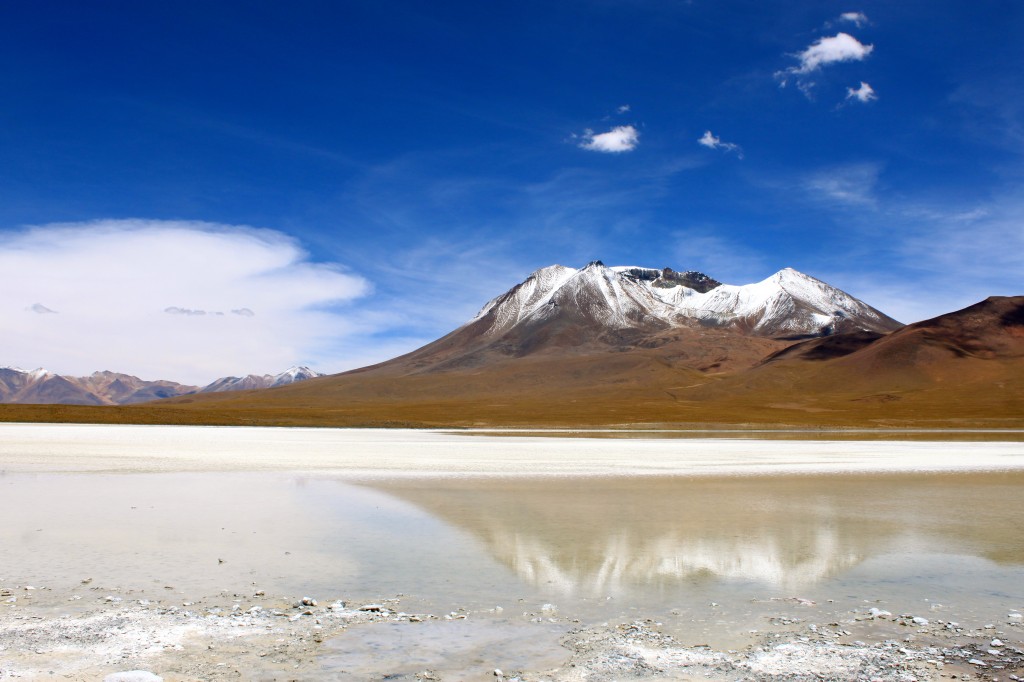
The Red desert and stone tree
The massive Ollagüe volcano (5,868m) loomed ahead as we approached the Eduardo Avaroa National Reserve after driving for a while through a desolate red desert.
We had lunch under a parasol in the middle of the desert after which we headed on to the stone tree; it was once a rock, but sandy wind and weather had sculpted this weird tree-looking stone over the years.
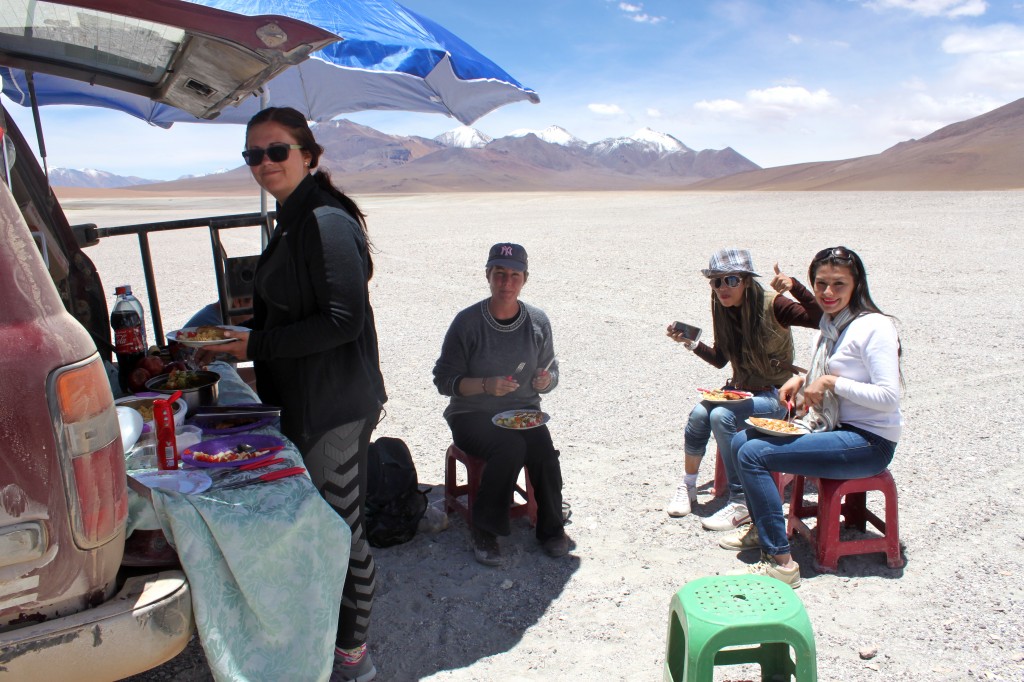

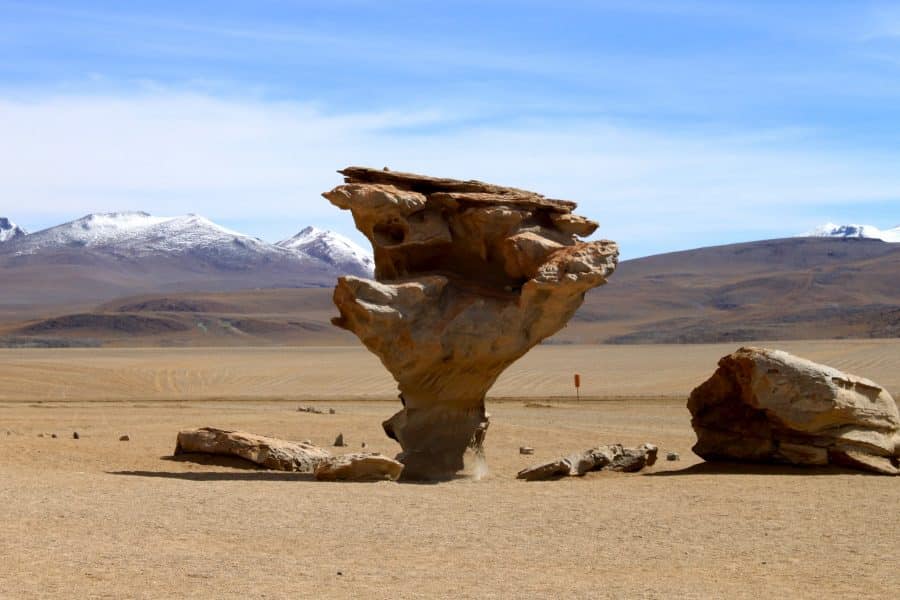
Laguna Colorada
The last stop of the day was Laguna Colorada, which is a red-colored salt lake.
Its color comes from the presence of minerals, and the pink flamingos living in the lagoon created a very unique scene of spectacular beauty.
The day was settling into its decline at 5 pm as we arrived at the hotel.
My relationship with high altitude always leaves me with headaches, so I called it a night basically right after arrival.

Day 3: Dali Desert, geysers, and Laguna Verde
4.30 in the morning.
The cold was intense and I was sitting in the cool car, impatiently waiting for it to heat up while gazing at the clear starry skies.
Geysers and hot springs
About 40 minutes from the hotel was the Geysers of Sol de mañana and we would reach it during the most active moment and with the first ray of light.
This point was the highest altitude of the tour at 5,000 meters above sea level.
After that, we moved on to the Hot Springs of Polques where some of the group took a bath.
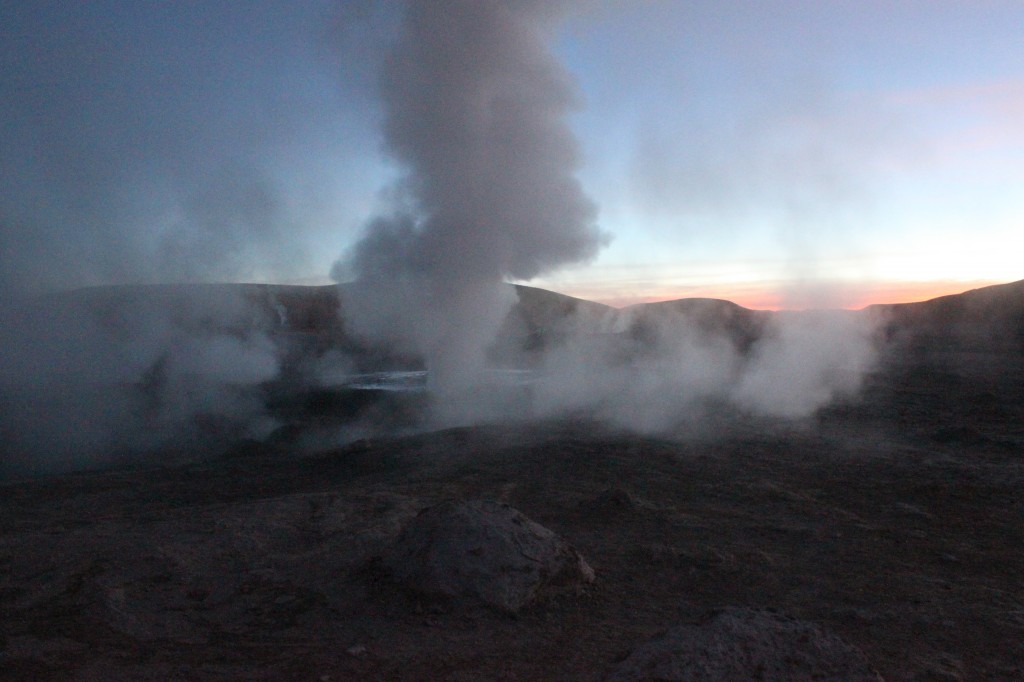
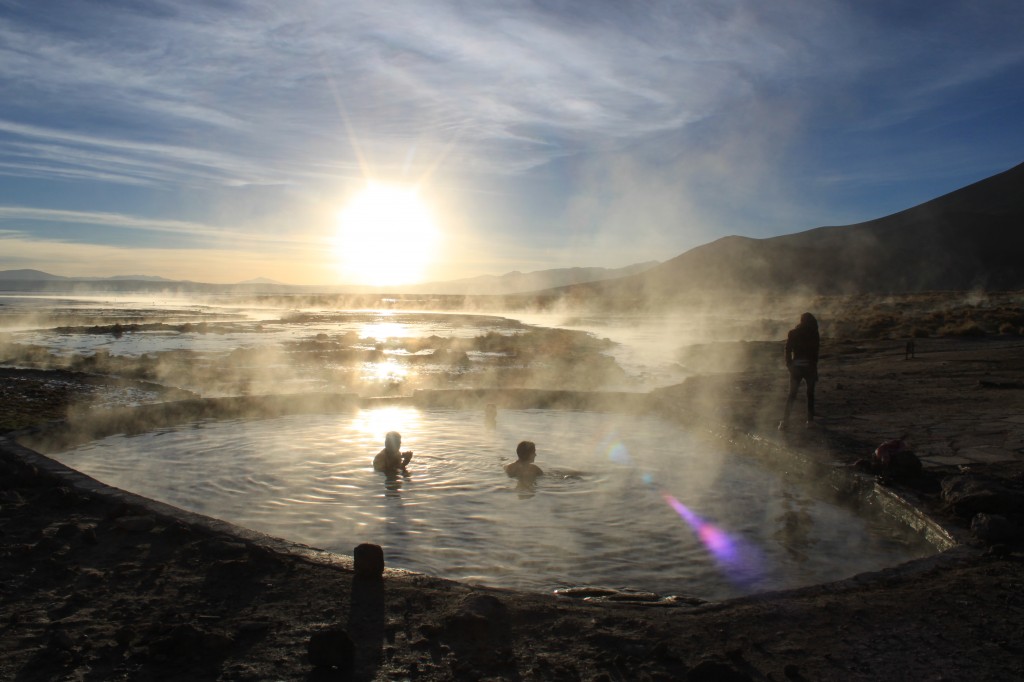
Laguna Verde
The last stop on the trip was Laguna Verde (4,400m), a beautiful green-colored salt lake at the foot of the Licancabur volcano.
This was my favorite place of these two days. I loved the quietness, the simplicity, and the beauty.
It all seemed so perfect like every rock and drop of water played an indispensable role in the landscape. I could have stayed there for hours.

The Chilean border
But instead, we drove to the Chilean border where I – this time – deliberately sneaked across it.
Just for the record, this is not becoming a bad habit of mine. Samantha, our American/English crew member was moving on further south, while we were turning back towards Uyuni town in the north.
We had a seven-hour drive ahead of us, and on the way we did a stop at José’s favorite spot – the llama place. I get why he likes it so much. It sure is peaceful and quiet.
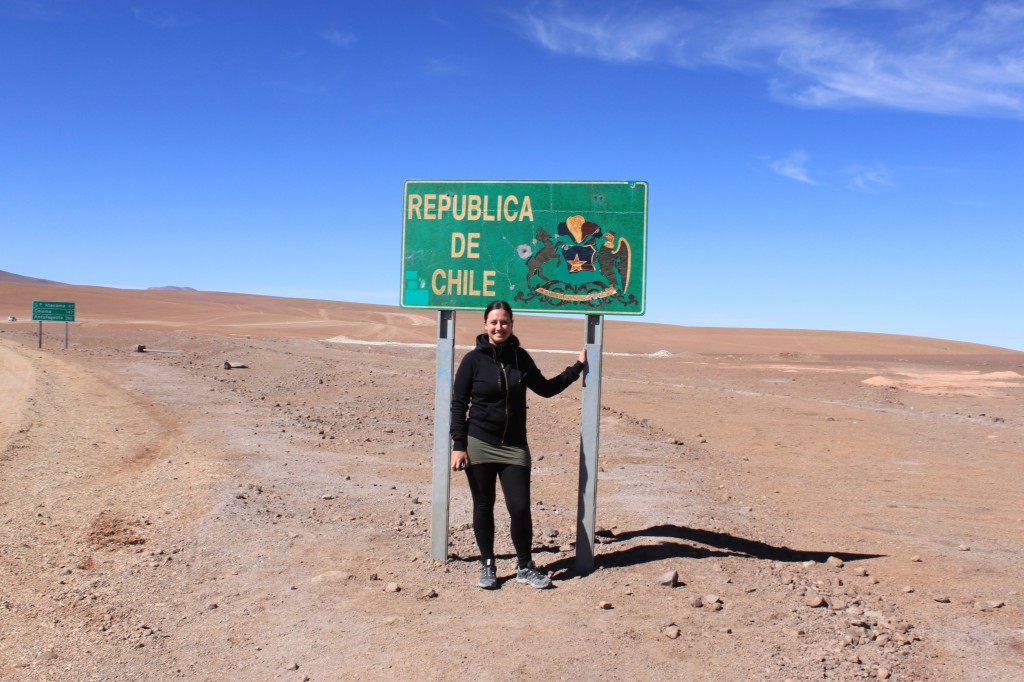
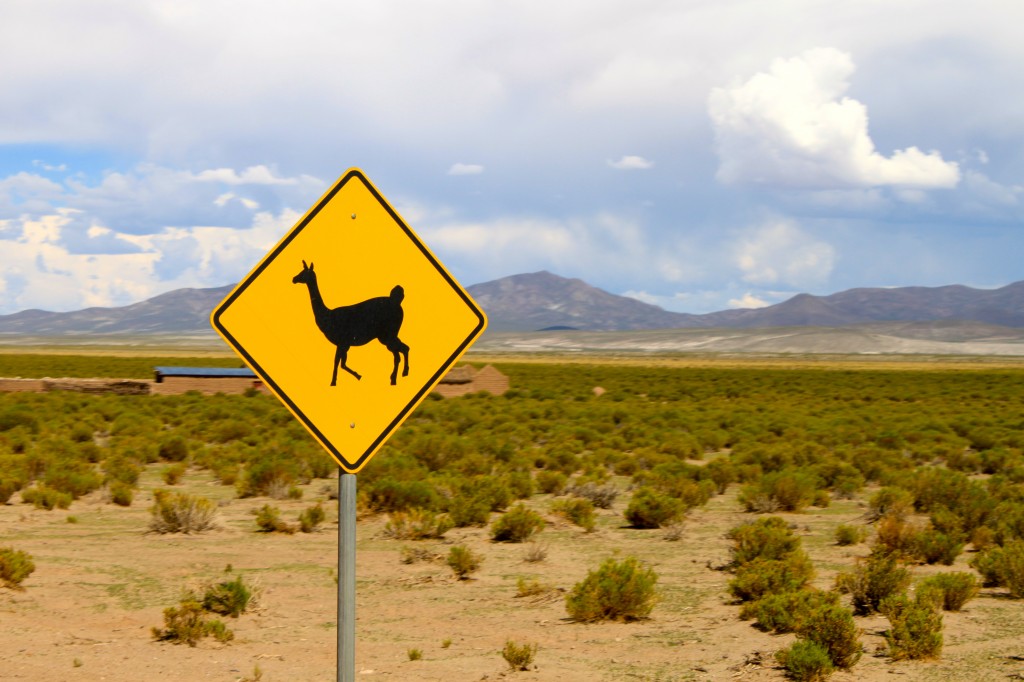
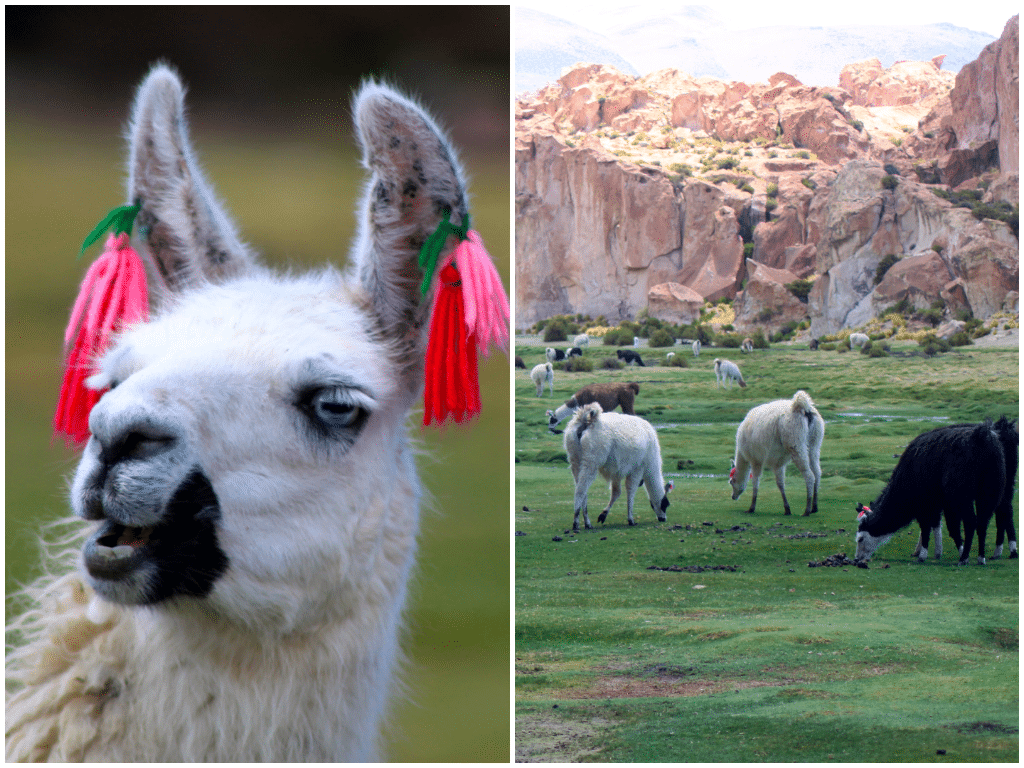
Uyuni Salt Hotel
After viewing the sunset, we drove back to the city and spent the night at a salt hotel. How about that!
Everything in this hotel was made of salt blocks.
The walls were of salt, the chairs were of salt and the bed was of salt. Even though the hotel itself was rather basic, it was super fun to stay there.
I mean, how often can you say that you’ve spent the night in a salt hotel?
The best time to visit Salar de Uyuni
There are two peak seasons for visiting the Salar de Uyuni, Bolivia.
One is between July and October where the sky is super blue and the weather is on your side.
The other is the rainy season between January and April, which by far is the most beautiful if you ask me.
During the rainy season, a thin sheet of water covers the flats, reflecting a perfect representation of the sky above so that it is impossible to tell where the sky ends and the land begins.
Absolutely breathtaking!
Salar de Uyuni packing list
- Sunglasses. The sun is quite powerful in the Salar and you will be blinded without sunglasses.
- Sunscreen. This is a must, as the UV radiation here is exceptionally strong.
- Water. Four liters should be enough for three days. You can buy it in Uyuni town.
- Swimsuit. If you join the 3-day tour, you’ll visit hot springs, so bring your swimsuit.
- Towel
- Softshell jacket. Uyuni is high altitude, and it gets quite cold and windy. I bought my softshell and it was perfect. It’s lined with fleece and it’s wind and water-resistant. A parka would be too warm.
- Toiletries. Bring your daily essentials and don’t forget toilet paper (this is a rare commodity in the desert.)
- Snacks. There are no shops out there, so bring a snack or two for the road.
- Camera. You’ll want to get this scenery on camera!
- Flashlight. Power outages are common, and most places turn off power on purpose in the evening. I always bring my mini Maclite – it’s so tiny and convenient.
- Photo props. Like candy, a dinosaur, a water bottle, or something else to make your photos stand out.
FAQ – Uyuni salt flats 3 day tour
How much does it cost to go to Uyuni Salt Flats?
The cost can vary widely depending on the type of tour and level of comfort. A basic 3-day group tour typically costs between $150 to $250 per person, including transportation, meals, and accommodation.
How many days do you need in Uyuni Salt Flats?
To fully experience the Uyuni Salt Flats and surrounding attractions, plan for 3 days. This allows enough time to explore the vast salt flats, nearby colored lagoons, and unique desert landscapes.
Are Uyuni Salt Flats worth it?
A thousand times YES. The Uyuni Salt Flats is an otherworldly experience with surreal landscapes! Especially during the rainy season when the flats turn into a giant mirror, it’s a once-in-a-lifetime sight.
What’s the altitude of Salar de Uyuni?
Salar de Uyuni sits pretty high up, at about 3,656 meters above sea level. That’s around 11,995 feet up in the air, so you’re way up there in the elevation!
Is there a shower on the 3-day Bolivia Salt Flats Tour?
Yes, but only a cold shower.
More posts from Bolivia you might like
- Biking down Bolivia’s Death Road – the world’s most dangerous road
- Witches Market in La Paz: A look into Bolivia’s soul
- Bolivia’s Valle de la Luna: A Trip to the Moon
- Packing list for Bolivia
- 24 Bolivia travel tips (to make visiting Bolivia easier!)
Save it!
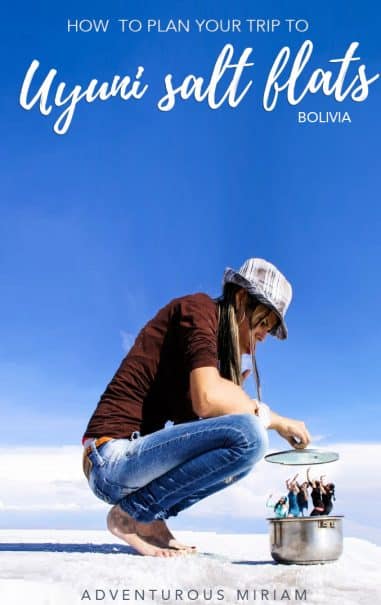
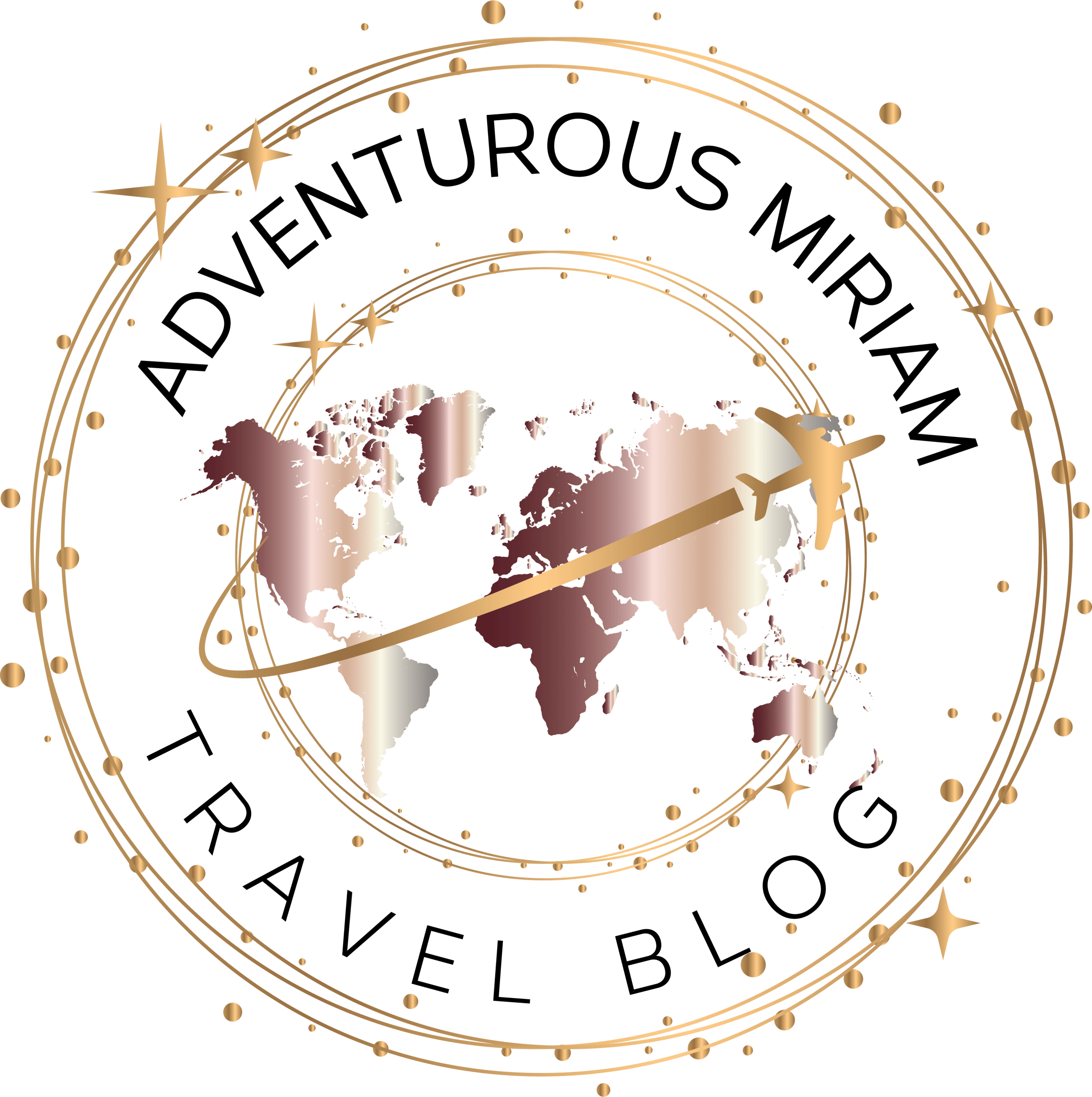

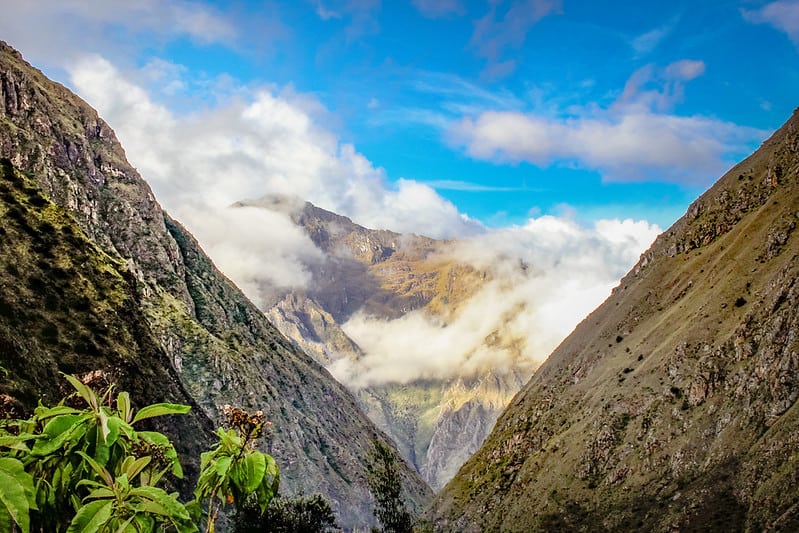

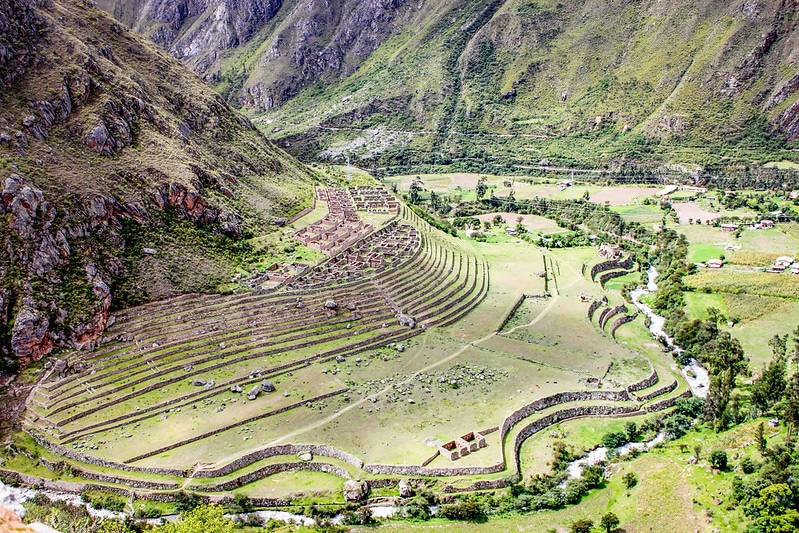

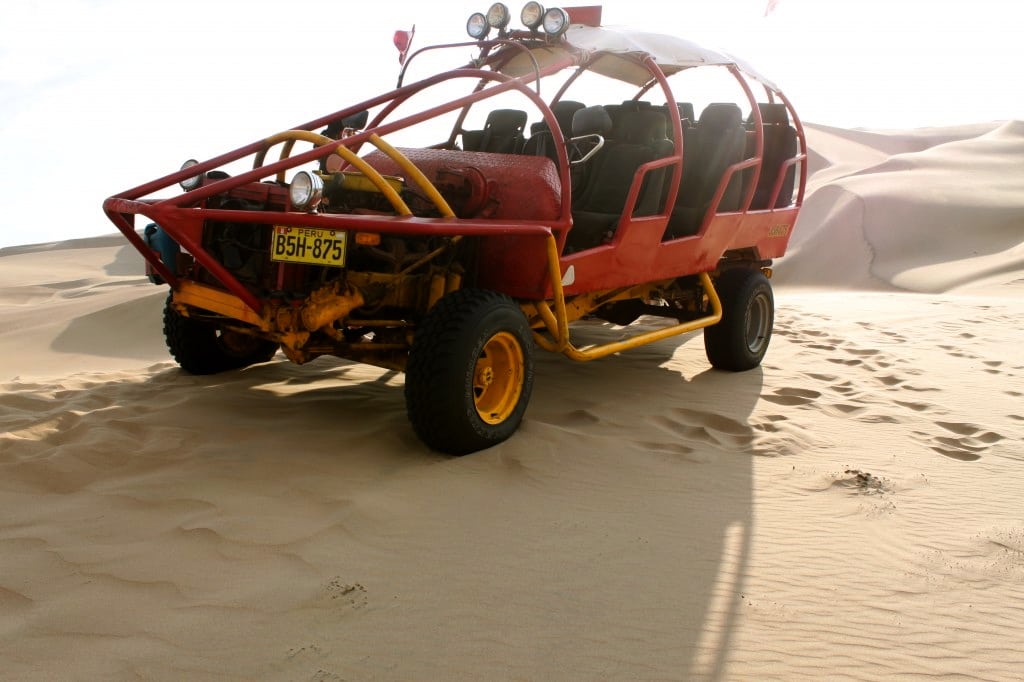
Hi Miriam,
Nice blog, and thanks for the information. We are going to Chile in a week, and thinking about doing a round trip tour from San Pedro to Uyuni. Can you answer two of our questions? 1. How long of a round trip is it? 2. Does Jose have a round trip itinerary?
Thanks,
Sudip
Vancouver, BC
Hi Sudip,
Thanks, and great hearing from you. I’m not sure if José does trips from San Pedro, but you can always ask him: [email protected]. We stopped at the border of Chile, but that was at the end of the trip. I know that it is possible to do the Uyuni trip from San Pedro, though. Just not sure if Quechua Connections offer it.
I wrote another post about the itinerary here: https://adventurousmiriam.com/tips-for-the-uyuni-trip/ But if you have the time, I would definitely encourage you to take the three day tour!
Have a great trip!
//Miriam
Hello,
I’m trying to book with Quechua Connections, did you book when you arrived in Uyuni or before?
How quickly does Jose reply to emails, do you have a phone number for the company?
Do you think there would be space if I just turned up in the day?
Sorry for the list of questions.
Thank you
Hi Nicola,
Thanks for your comment. I booked the tour 1,5 month in advance, but that wasn’t really nessesary. However, on the day we were leaving for the tour, I met several people looking for free spots at Quechua Connections, and José had to turn them down as there were no room left. You’ll be taking a chance by not booking it in advance, especially if you’re going on the tour the same day as you arrive.
Unfortunately, I don’t have a phone number for him, but you can write him at this email address: [email protected]. He was quite fast at replying (like, on the same day), but if you don’t hear back from him, it’s probably because he’s on a tour and won’t return until a few days. Try to write him again, he’ll answer eventually 🙂
//Miriam
Great photos! I always love looking at other people’s photos of the Uyuni Salt Flats because there’s so much to see. I like the one you have with the people in the cooking pot, haha!
I just finished a post about my trip with some cool pictures – take a look if you get a chance!
Safe travels!
Thanks! Uyuni is without doubt the most beautiful place I’ve ever been.
Hi! Miriam such a great pics you’ve taken I like you blog, cheers from Salt flats, this is the raining season we still doing trips see you next time.
best regards
Jose
Hi Jose, great to hear from you! I’ll let you know when I return to Uyuni – we had so much fun! 🙂 All the best from Denmark
Hi Miriam
Which month did you travel? I don’t think the salt flats are wet throughout the year?
Hi Hira,
I went to Uyuni in January, which is the rainy season. It’s the most beautiful time to visit because you get the water reflections, but it’s also a risky time because sometimes the flats get flooded and you can’t enter. If you’re willing to take the risk, I recommend visiting from January to April.
Hi,
Your tour was 3 days. You describe the first one. What about the other 2? Wherr do you stay and what do you do? I’d go for 3 days akdo, but need detaild. I believe US citizens need visa for Bolivia. Care to educate ne?
Hi Victoria, you can see here what we did the other two days: https://adventurousmiriam.com/uyuni-a-trip-to-another-planet/
On this tour, the organiser takes care of everything, including accommodation and food. We stayed at a salt hotel, but the details vary depending on which company you choose to go with. As for visa, you can check the status here: https://bo.usembassy.gov/u-s-citizen-services/local-resources-of-u-s-citizens/
amazing work do u have sc ;)))
Sc = Snap Chat? Nope.